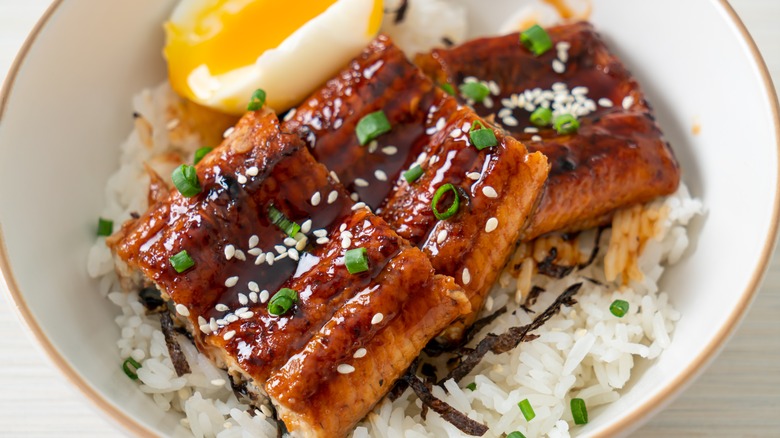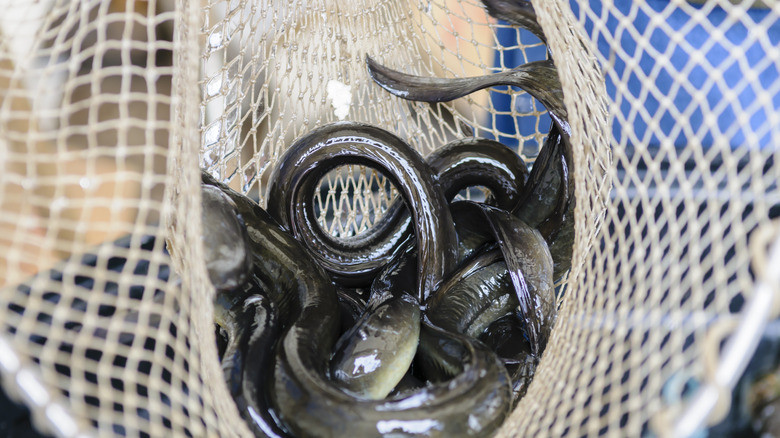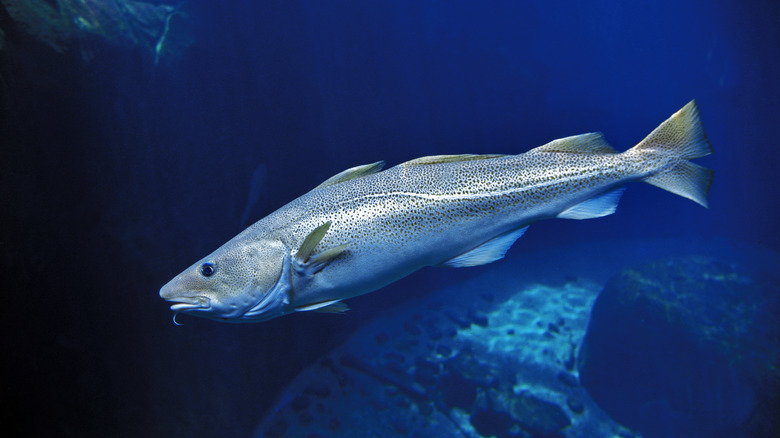Read This Before Ever Eating Eel Sushi
Sushi's rise in popularity in America has been dramatic, from an almost-purely West Coast phenomenon in the 1960s to a staggeringly successful industry worth $28 billion today. Though it may have taken a lot of Americans to get on board with the idea of raw fish, sushi is now firmly entrenched as a popular cuisine in American society.
What's interesting, though, is that one of the most difficult sushi items for a lot of Americans to wrap their heads around is not a raw item, but a cooked one: freshwater eel, more correctly referred to as "unagi." Eels are historically consumed in many cuisines (including numerous European ones), but they're not typically a major part of the American diet. Japan is a different story: the country accounts for around 70% of the world's eel consumption. But the real problem isn't that Americans struggle with eel — the problem is you shouldn't be eating it at all.
Eel isn't a remotely sustainable food source
Eel is absurdly popular in Japan — whether eaten in sushi, as donburi, or just grilled. There was even an eel-flavored soda at one point. And though its somewhat greasy texture can sometimes be a challenge for American audiences, it's still frequently a component in sushi platters in the United States.
This is a problem because like many fish, eel populations are subject to overfishing. While many fish varieties have this issue, though, freshwater eel is an unusually bad case: in 2003, the Japanese populations were recorded as having dropped by 90% since 1980. European populations were in even worse shape, with a 99% drop. Some efforts have been made to curb these issues. Ireland issued a total ban on eel fishing in 2010, and 48 U.S. states prohibit fishing for juvenile eels. But as long as unagi remains a staple of sushi dinners, freshwater eel is going to face some issues.
There are plenty of other fish that suffer from overfishing
Eel is, of course, far from the only fish that should not be eaten due to overfishing problems. Orange roughy, grouper, Spanish mackerel, and Atlantic cod, and have all been overfished to the point where they shouldn't really be eaten at all. And a few fish face sustainability issues unrelated to population levels — like swordfish, whose longline fishing methods can do environmental harm to other marine life.
Eel isn't even the only sushi fish that faces sustainability issues. Bluefin tuna, the jewel of the sushi world, has long been subject to overfishing issues — first the Pacific bluefin, then its Atlantic cousin after sushi purveyors sought it out as an alternative source.
Fortunately, we know fish populations can recover if given time and care, as conservation efforts have borne fruit in the past. One of the best examples is Atlantic halibut, whose population plummeted in the late 1800s due to overfishing. It took over a century, but populations have been recorded on a remarkable rise in the last 20 years. Recovery is possible for all of these species; producers and consumers just have to give it time.


